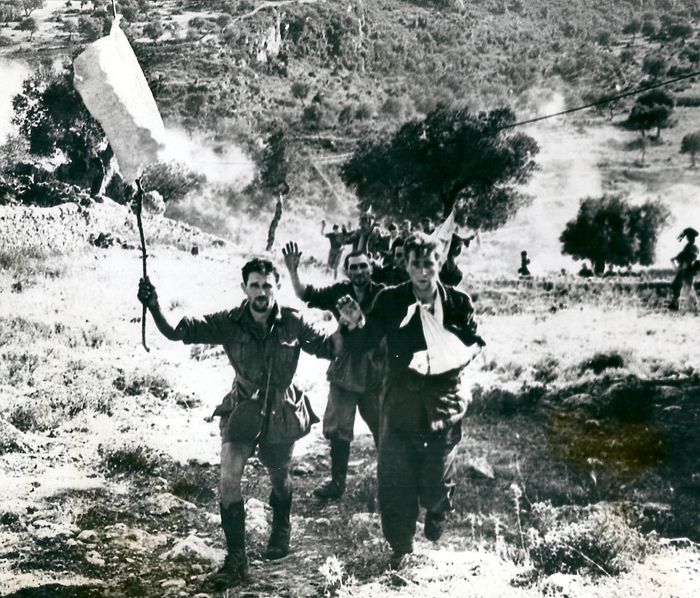
by Victoria Silverwolf
Start With an Earthquake and Build to a Climax
The above phrase, or some variation on it, has been attributed to Samuel Goldwyn, although this is almost certainly apocryphal. In any case, it represents the interest Hollywood has long had in depicting disasters on the silver screen. Sometimes these have been recreations of historic events, from San Francisco (1936, the 1906 earthquake) to In Old Chicago (1938, the 1871 fire) to A Night to Remember (1958, the sinking of the Titanic.) Watch for these on the Late, Late Show.
Here in the Atomic Age, it seems that fear of the Bomb has replaced some of the fear of Nature. Going back at least as far as Five (1951), films dealing with nuclear disasters have filled the theaters and drives-ins for quite a while now. There are far too many of these to discuss in any detail, from low-budget quickies full of folks in rubber suits pretending to be monsters, to sober and serious dramas. The best of these have been the topics of full articles by Galactic Journeyers, so I direct you to the archives for more information.
Humanity gets wiped out, or at least reduced to very few, in most of these apocalyptic flicks. But what about those in which the entire planet Earth is threatened with destruction? I can only think of a few.
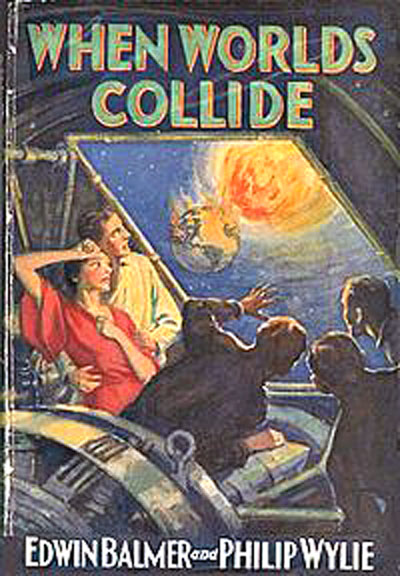
Read the book!
Based on the 1933 novel by Philip Wylie and Edwin Balmer, George Pal's 1951 production of When Worlds Collide dealt with a wandering star on its way to crash into Earth, and the effort to build spaceships to carry a few survivors to the star's only planet. (They sure were lucky that it turned out to be habitable.)
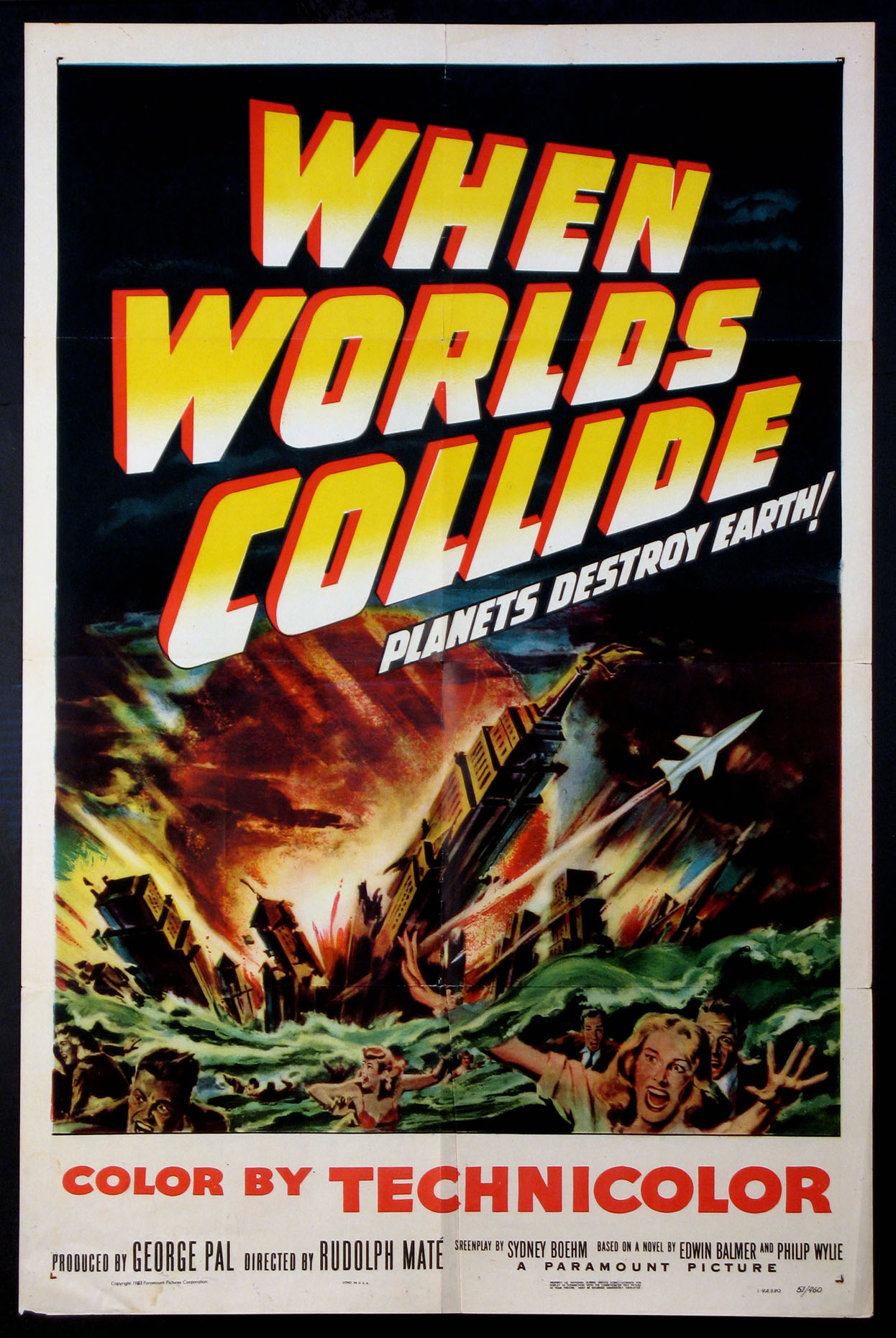
See the movie!
It was a handsome production, winning an Oscar for special effects and nominated for cinematography.
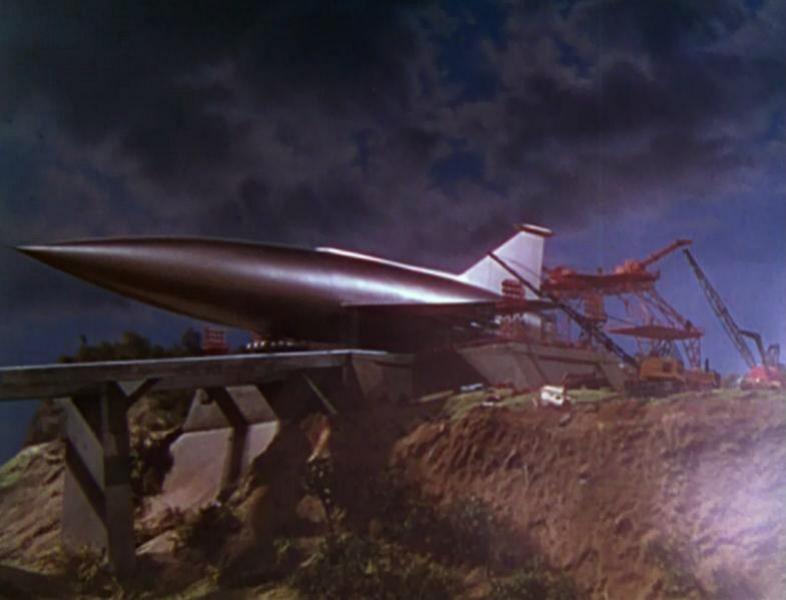
Nifty spaceship. Looks like an Astounding cover, doesn't it?
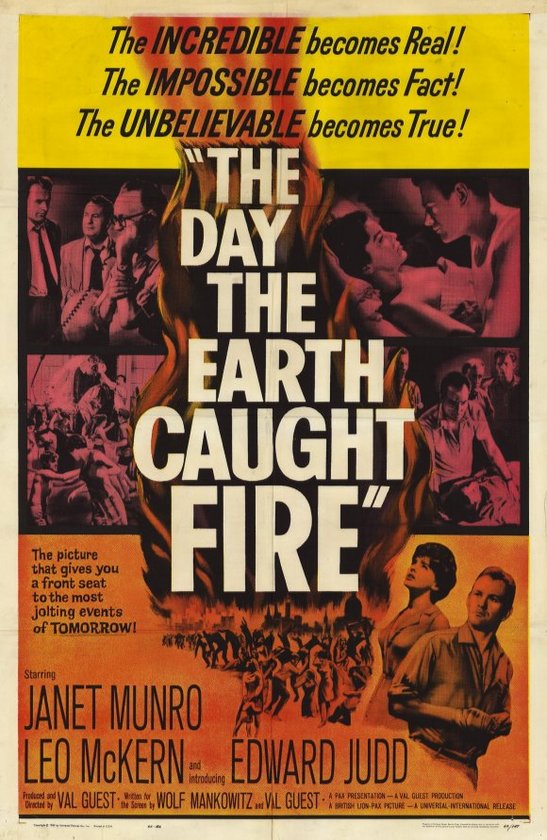
See the movie; there isn't any book.
1961's The Day the Earth Caught Fire was a British production. Filmed in black-and-white on a modest budget, it depicted the effect that simultaneous nuclear bomb tests by the United States and the Soviet Union had on Earth's orbit, tilting it on its axis and sending it spiraling into the Sun.

Some scenes were tinted to suggest the devastating heat.
An unusually realistic portrait of the possible end of the world, with an ambiguous ending, I found it made for compelling viewing.
Will the latest entry in this small group of Earth-In-Peril films prove as exciting as its trailer suggests? Let's find out.
Dig We Must

All this destruction going on, and Dana Andrews is making a phone call.
The plot of the new movie Crack in the World seems to have been inspired by Project Mohole, so a brief review of that troubled effort to reach deep into the Earth is in order.
First proposed in 1957, Phase 1 of this mighty engineering project got started in 1961. Five holes were drilled at the bottom of the sea off the coast of Baja California, the deepest about six hundred feet below the ocean floor. (You have to consider the fact that these holes start about twelve thousand feet below the surface of the water.)
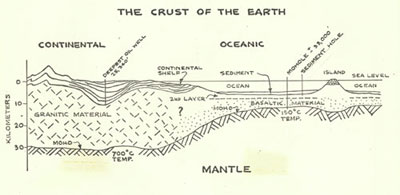
You can see from this diagram why it makes sense to drill from the bottom of the ocean rather than from the land.
The rumor mill has it that there's a lot of controversy over the multiple scientific, political, and economic factors involved in moving on to Phase 2. Eventually, Phase 3 of the project is supposed to achieve the ultimate goal of reaching the Mohorovičić discontinuity, which is the boundary between the Earth's crust and the mantle. (It's named for the Croatian seismologist Andrija Mohorovičić. No wonder most folks call it the Moho layer.) It's too early to tell how low things will go.
The Core of the Problem

The opening title, in cracked letters.
Project Inner Space, our cinematic version of Project Mohole, begins on land rather than at sea. A brief scene of warriors carrying spears and shields establishes the fact that we're in Africa. We'll find out later that the location is Tanganyika. (That former nation only joined with Zanzibar to form Tanzania last year, so I'll cut the filmmakers some slack on the misnomer.)

It's hard to see here, but that scaffolding contains a rocket pointed down into the Earth.
A jeep carrying people of many different ethnicities and accents arrives at the site. They're here to talk to the head of the project, who needs their approval for his ambitious plan.
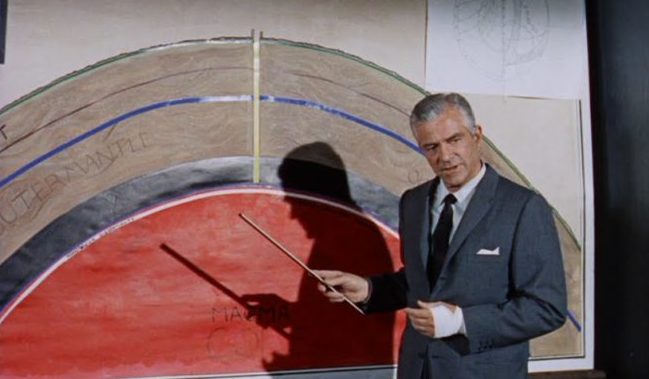
Dana Andrews as Doctor Stephen Sorenson.
You see, Project Inner Space is a lot more ambitious than Project Moho. Its goal is to reach all the way down to the Earth's core, so that the magma can be used as a virtually limitless supply of energy and raw materials. Since the Moho discontinuity is twenty-odd miles below the surface of the land (something less than five miles if you go under the sea) and the core is about eighteen hundred miles down, you can see that Moho is really small potatoes compared to Inner Space.
Doctor Stephen Sorenson (American actor Dana Andrews, leading man of the 1940's and 1950's, perhaps best known to most moviegoers for The Best Years of Our Lives, but familiar to horror film buffs for Curse of the Demon) wants the committee in charge of the political side of the project to give the OK to shoot an atomic bomb down into the Earth. (He's already got a rocket set up to deliver the thing, so it's obvious he expects to win them over to his side.)

On the right is Kieron Moore as Doctor Ted Rampion.
Stephen has a very strong sense that his notion of using an A-bomb is safe, but he's honest enough to admit that a fellow scientist, Doctor Ted Rampion (Irish actor Kieron Moore, best known to SF fans for appearing in The Day of the Triffids, and familiar to me for having the lead role in Doctor Blood's Coffin) opposes him. Ted thinks the massive explosion might create a crack in the world, leading to massive destruction. Well, given the title of the movie, you can guess who's right.
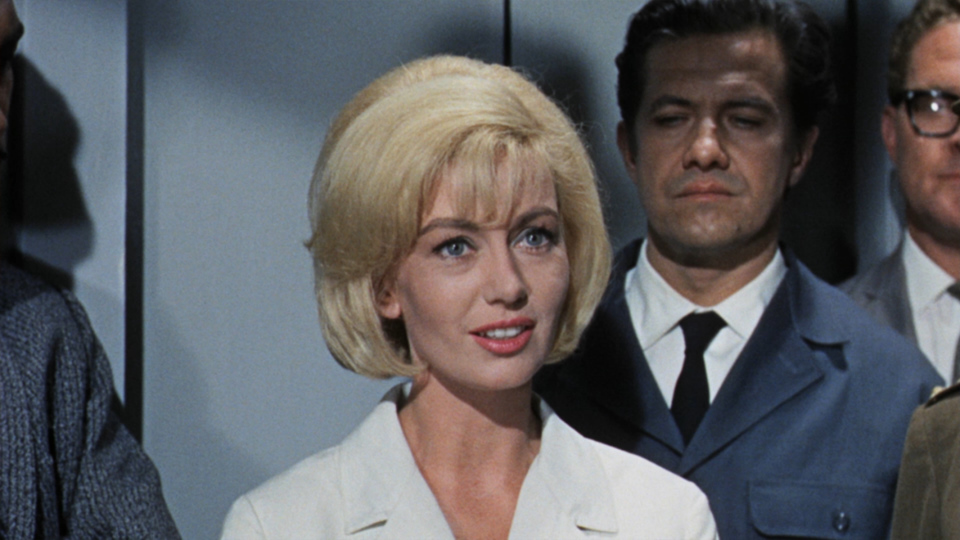
Janette Scott as Doctor Maggie Sorenson.
Complicating matters is the fact that Doctor Maggie Sorenson (British actress Janette Scott, also in The Day of the Triffids, and known to me from the psychological shocker Paranoiac), Stephen's wife and fellow scientist, was formerly in a relationship with Ted. Adding to this soap opera subplot is the fact that Stephen has a terminal illness that he is hiding from everyone, even his wife.
Stephen gets the go-ahead from his bosses, and the atomic bomb is rocketed deep into the Earth. The resulting explosion destroys the scaffolding and releases a fountain of magma. Everything seems just fine, but since we've still got about an hour of running time left, you know it's not going to be that easy.
Reports of massive earthquakes and tidal waves indicate that, yes, we've got a crack in the world. It's racing across the globe, too, threatening to rip the planet apart. Desperate to save Earth from total destruction, Ted and the other scientists attempt to stop the progress of the crack by dropping another nuclear bomb into the heart of an active volcano on an island.

Inside the volcano
Because the bomb has to be guided into the volcano by hand, requiring two people in spacesuits to descend with it, this is a particularly tense scene. (It's not a big surprise that Ted, our hero, is one of the two.) The device is dropped into the molten lava successfully, and triggered from a safe distance.
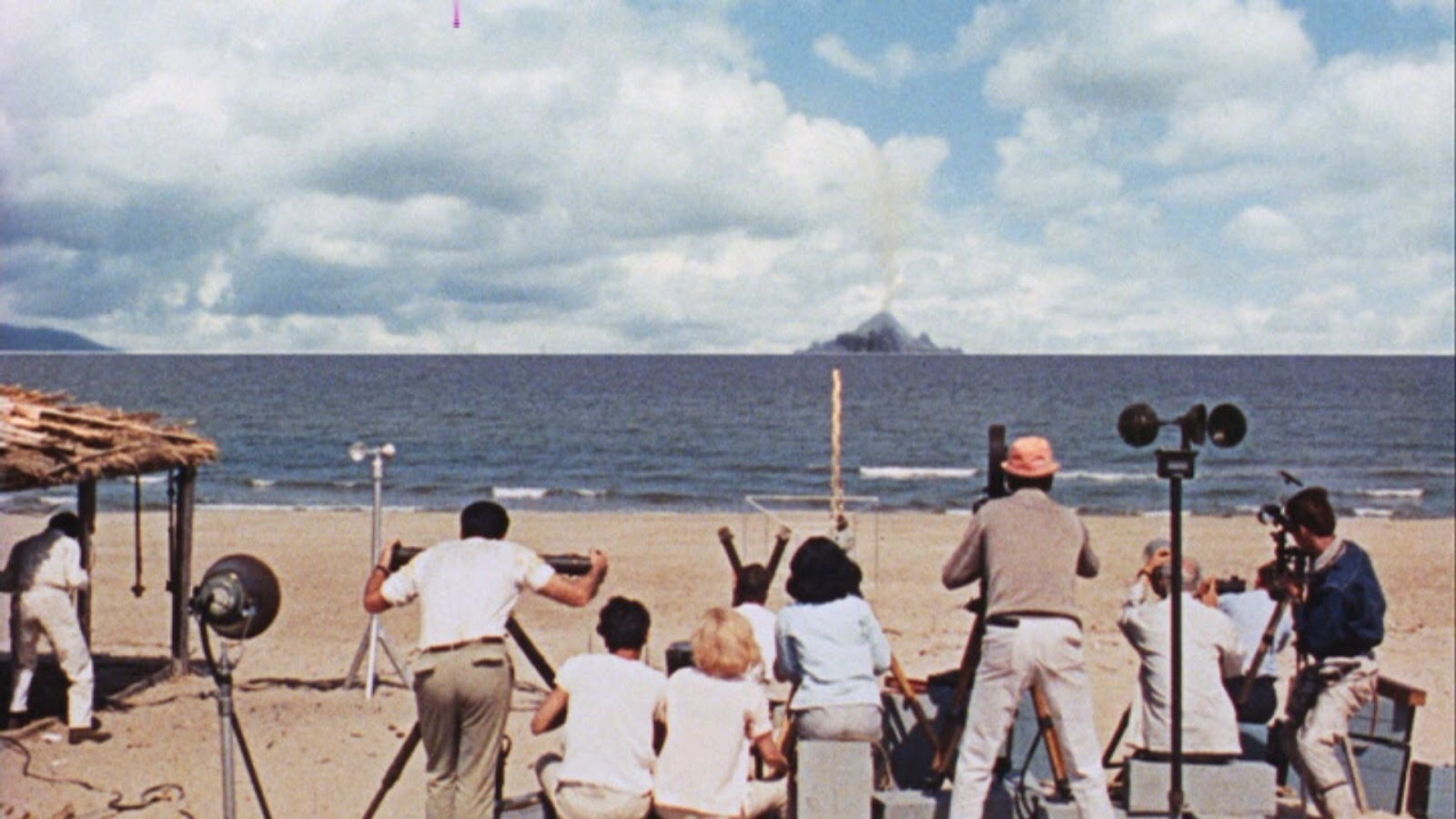
A nice little detail is the fact that the scientists carefully record all this.
Unfortunately, this doesn't halt the crack, but only reverses its direction. It looks like it will head back in the general direction of Project Inner Space, threatening to link up with itself and send a chunk of the planet off into space.
Scenes of massive destruction follow, portrayed through stock footage and some really good miniature effects. A railroad disaster, done with models, is particularly convincing.

The crack is approaching the doomed train from behind the bridge.
Will Earth survive? Will any of our three lead actors survive?
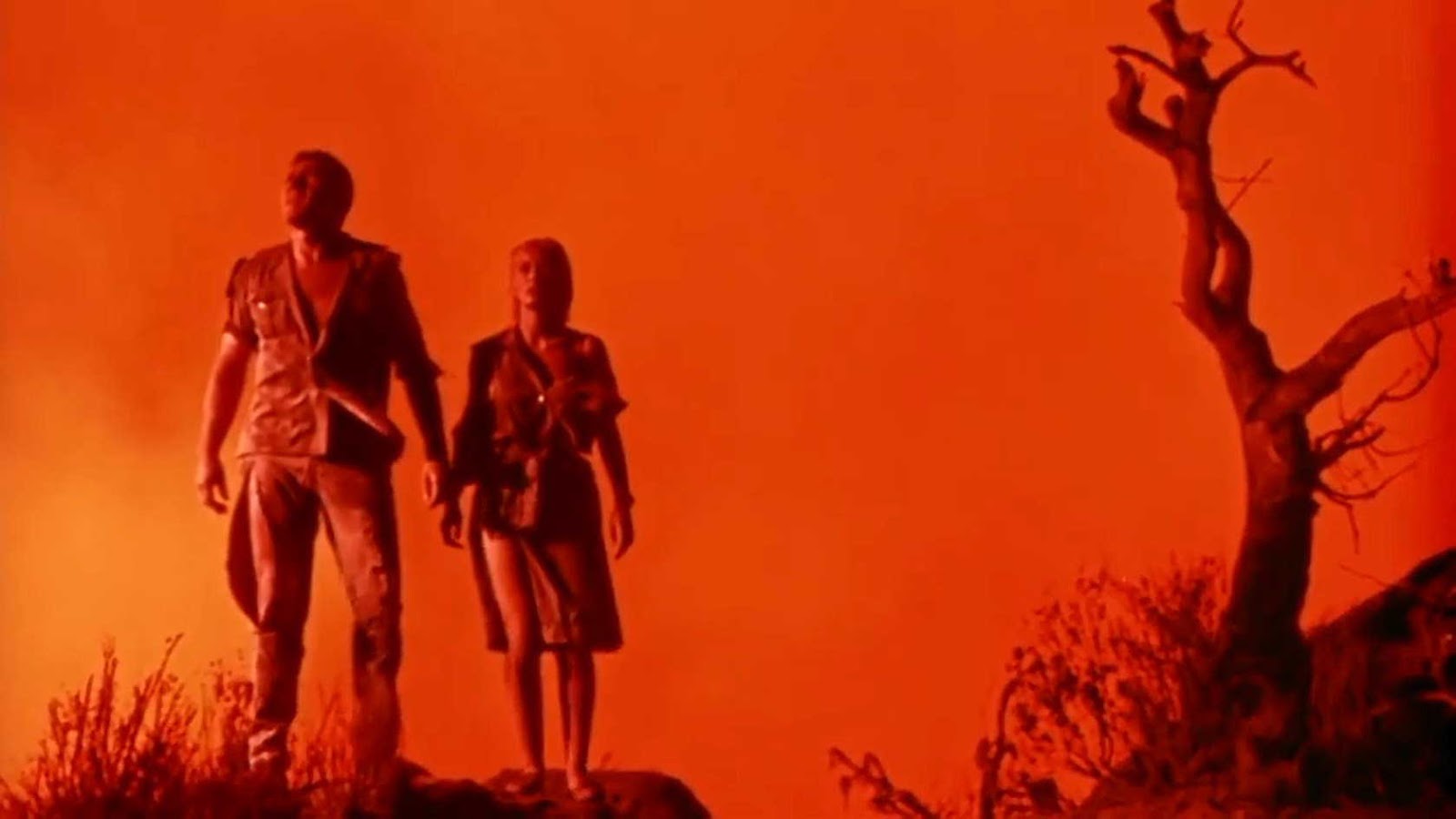
This scene may give you a hint.
Worth Digging Up?
The science in this movie may be questionable — there's an amusing moment when Doctor Maggie Sorenson, who should know better, pronounces the word seismograph as SEIZE-mograph — but overall I found it entertaining. The visual effects are quite good, and the story (written by Jon Manchip White and Julian Halevy, directed by Andrew Marton) is never stupid, even if it's implausible and clichéd at times.
I like the fact that Project Inner Space is truly an international effort, and that the scientists generally act like scientists. The sets look like places people could really work.
I also appreciated the fact that Doctor Stephen Sorenson isn't a megalomaniac, but simply a man who makes a terrible mistake, and does everything he can to correct it.
Four stars. I dug it.

![[March 6, 1965] Breaking Up Is Hard To Do (<i>Crack in the World</i> and Other Planet-Destroying Movies)](https://galacticjourney.org/wp-content/uploads/2020/02/PDVD_000-672x372.jpg)

![[March 4, 1965] OLD WINE IN NEW BOTTLES (April 1965 <i>IF</i>)](https://galacticjourney.org/wp-content/uploads/2020/03/IF-march-cover-655x372.jpg)


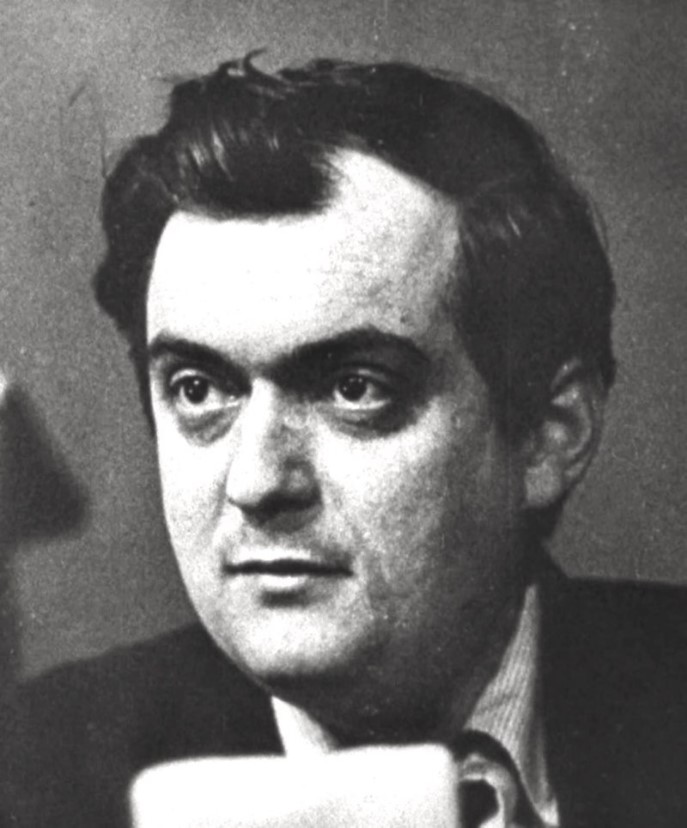

![[March 2, 1965] Doctor Who And The B-Movie Rejects (<i>Doctor Who</i>: The Web Planet)](https://galacticjourney.org/wp-content/uploads/2020/03/650302menoptra-672x372.jpg)


![[February 28, 1965] Tragedy and Triumph (March 1965 <i>Analog</i>)](https://galacticjourney.org/wp-content/uploads/2020/02/650228cover-672x372.jpg)



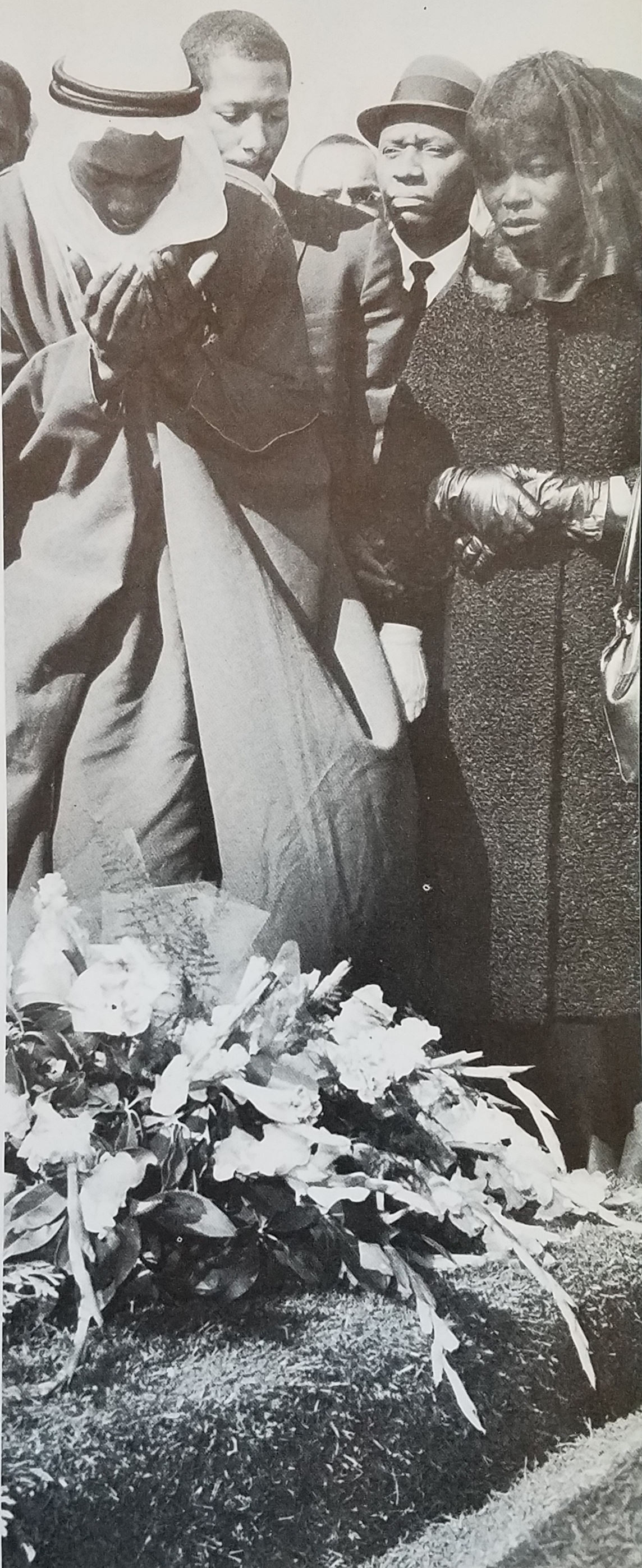
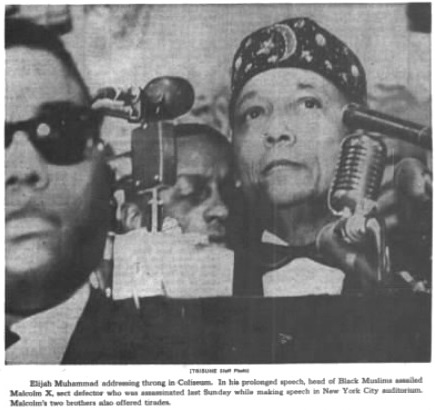




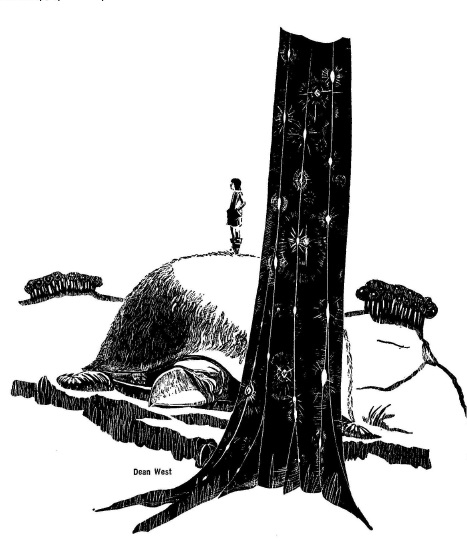

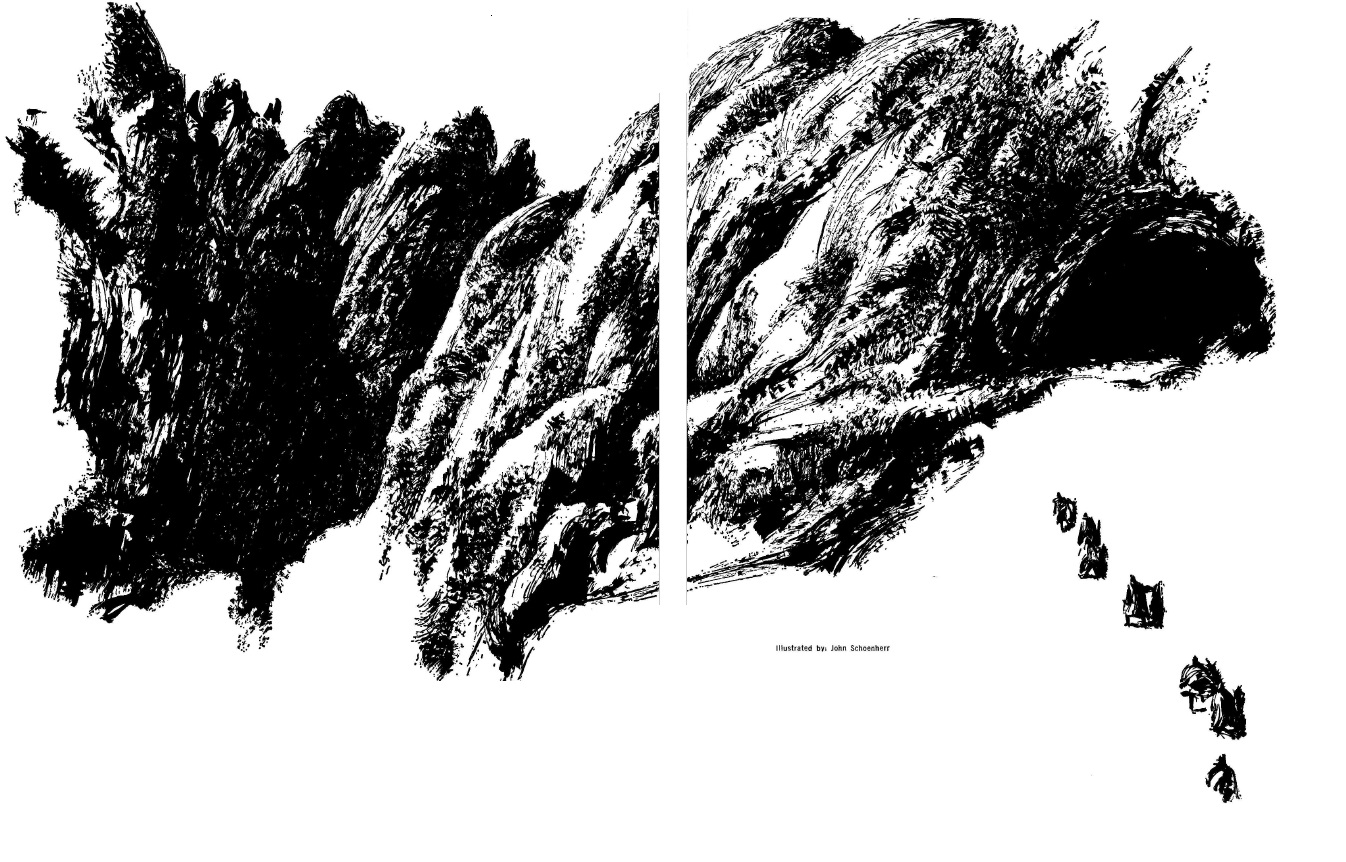
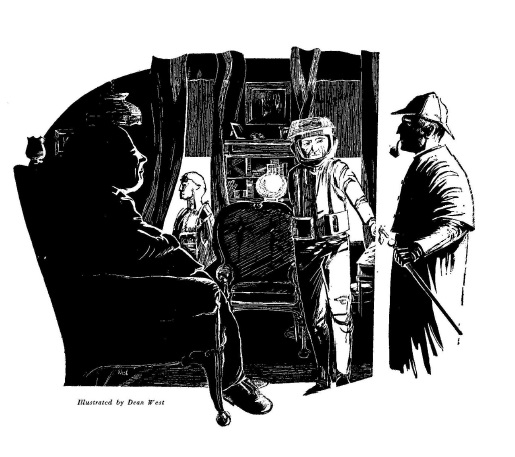

![[February 26, 1965] Dare to be Mediocre (February Galactoscope #2)](https://galacticjourney.org/wp-content/uploads/2020/02/650226covers-655x372.jpg)



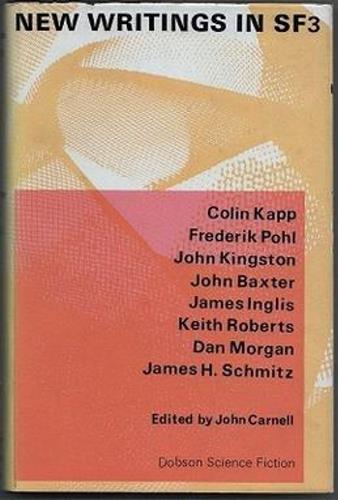
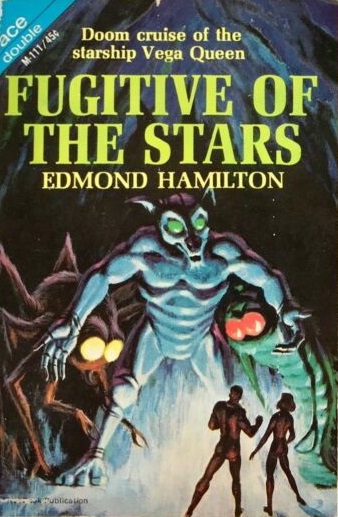
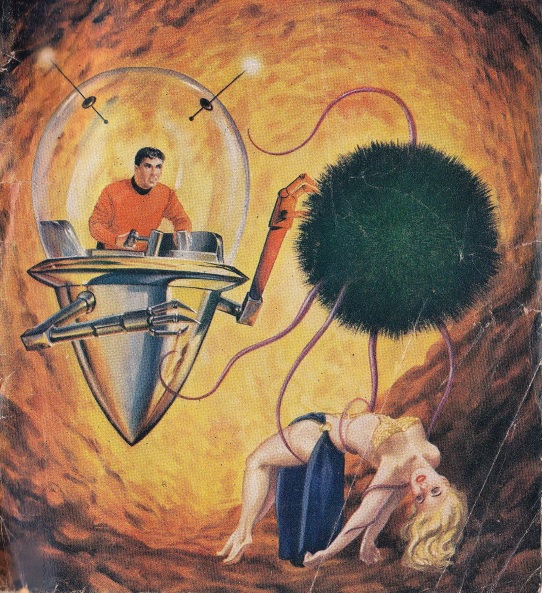
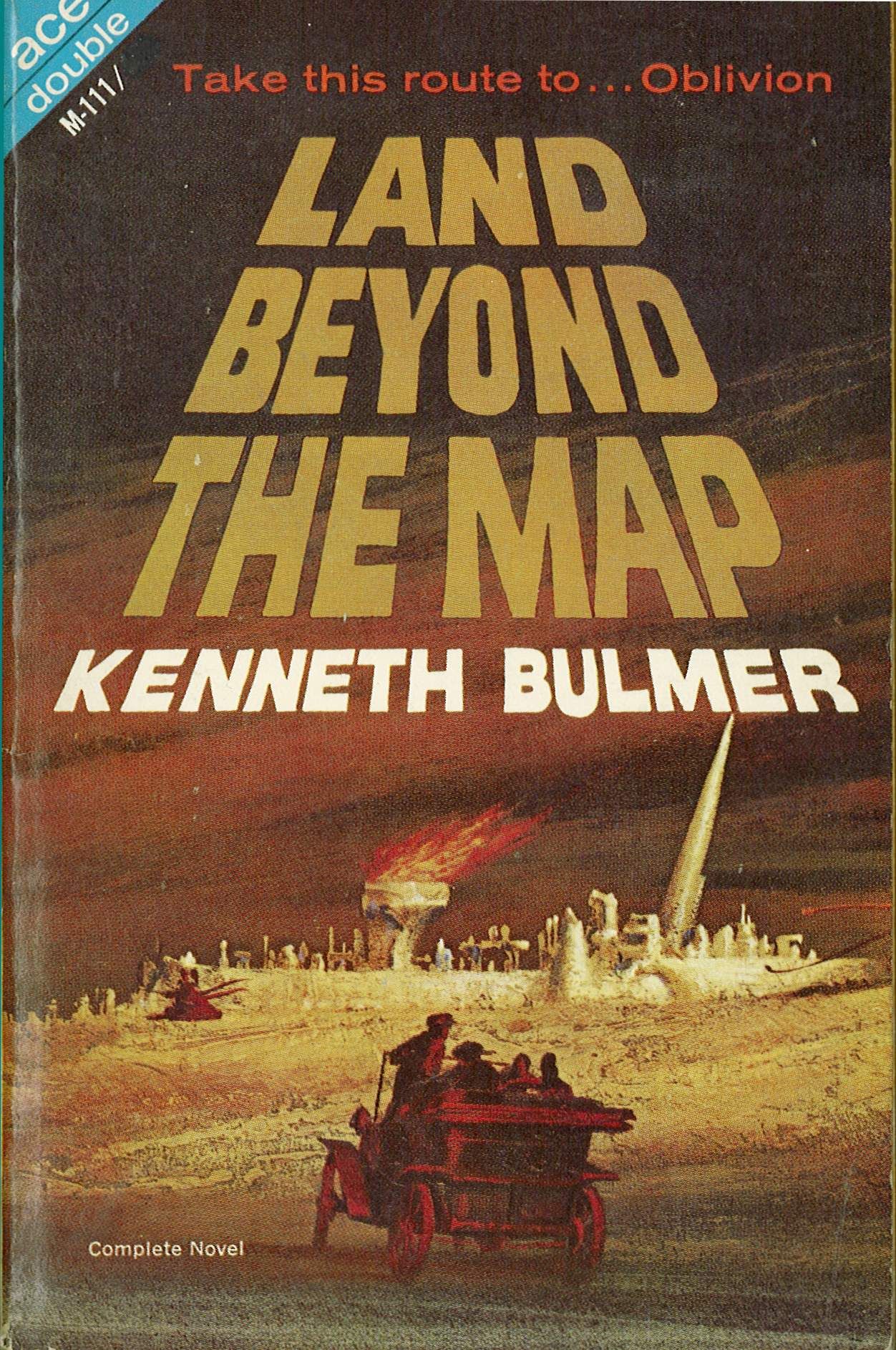

![[February 24, 1965] Doctors, Hunchbacks and Dunes … <i>New Worlds</i> and <i>Science Fantasy</i>, February/March 1965](https://galacticjourney.org/wp-content/uploads/2020/02/Science-Fantasy-March-1965-672x372.jpg)


 [Image by the writer]
[Image by the writer]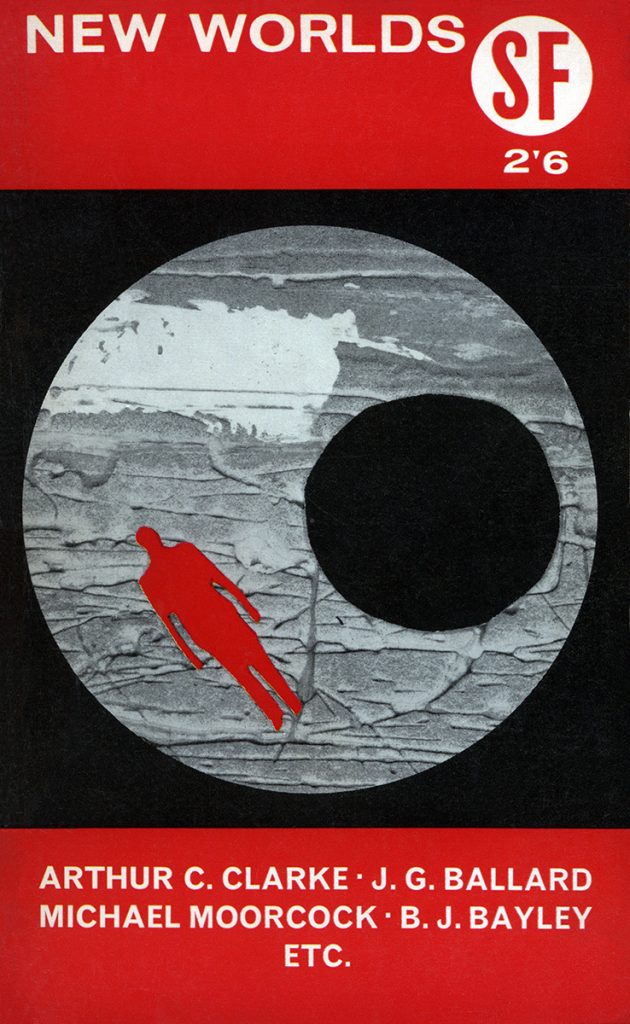
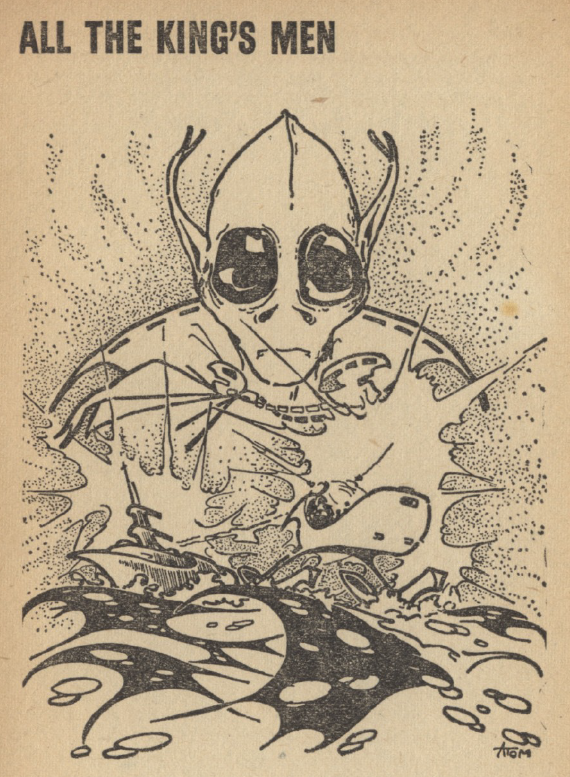


![[February 22, 1965] Theory of Relativity (March 1965 <i>Fantastic</i>)](https://galacticjourney.org/wp-content/uploads/2020/02/Fantastic-v14-n03-1965-03_0000-3-672x372.jpg)



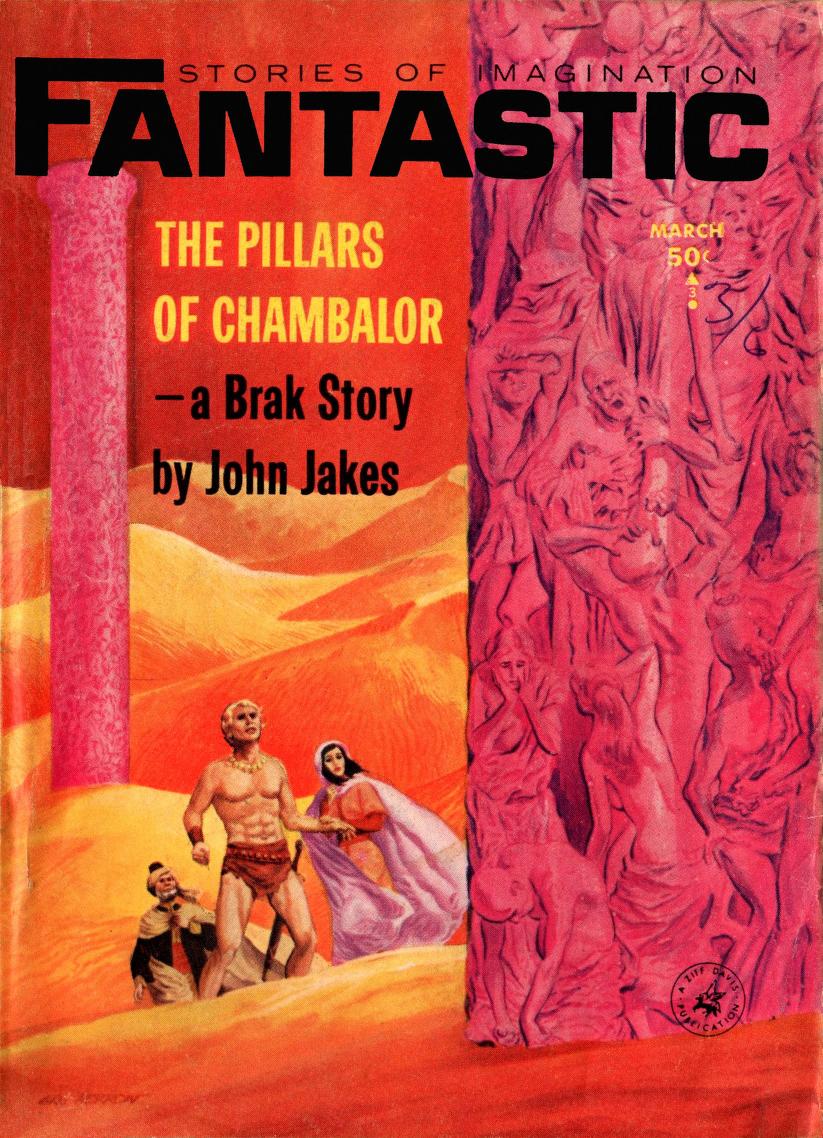
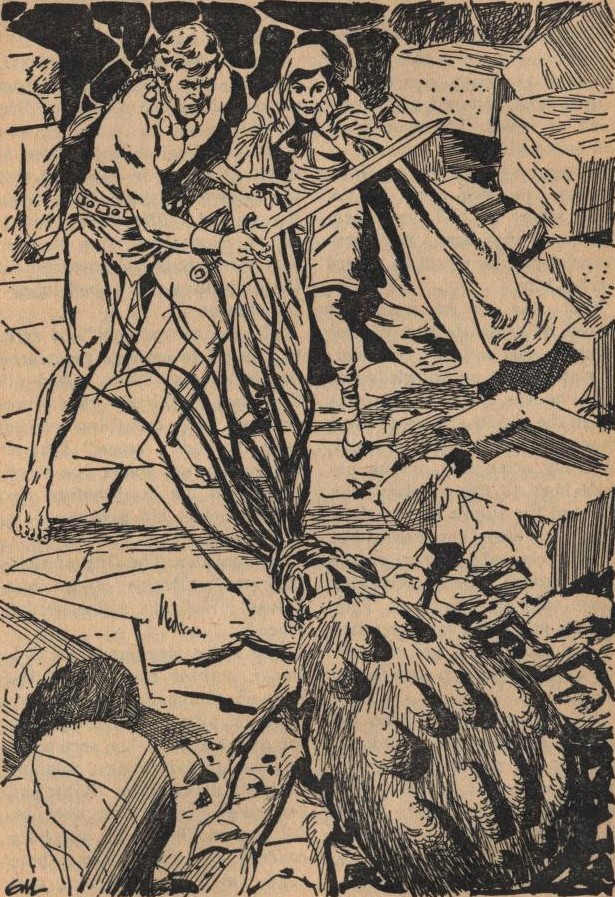

![[February 20, 1965] Twice as nice (Ranger 8)](https://galacticjourney.org/wp-content/uploads/2020/02/650220ranger8approach-576x372.jpg)







![[February 18, 1965] OSO Exciting! (February 1965 Space Roundup)](https://galacticjourney.org/wp-content/uploads/2020/02/650218oso2-576x372.jpg)






![[February 16, 1965] Return to a Quagmire (March 1965 <i>Fantasy and Science Fiction</i>)](https://galacticjourney.org/wp-content/uploads/2020/02/650214cover-672x372.jpg)






